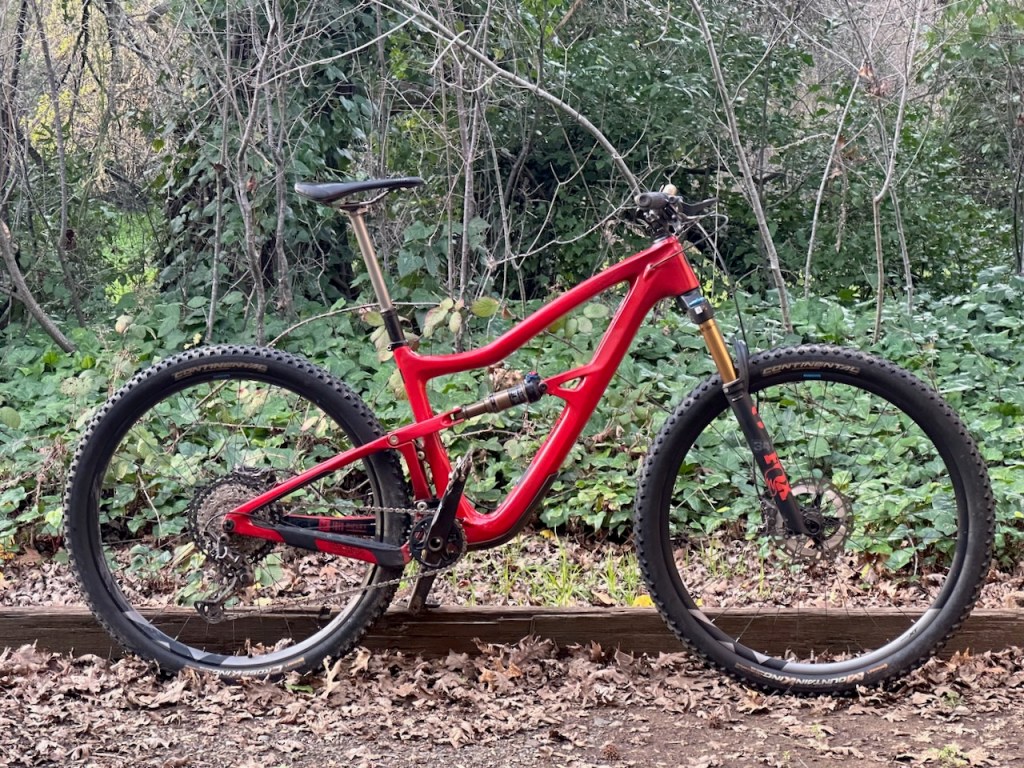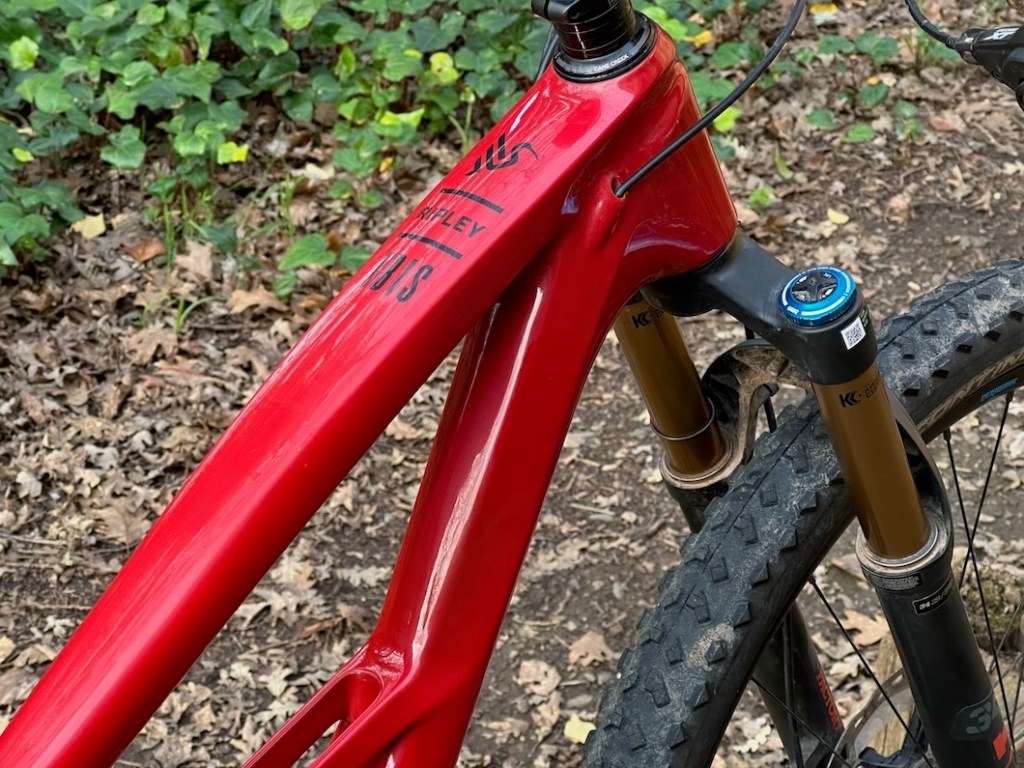I’ve been reviewing products since the 1990s and I’ve written enough shootouts (what a terrible term) to have suffered the wrath of company owners and marketing directors who compared me to lower order life forms like slime molds, bacteria and politicians. Their displeasure wasn’t unwarranted, to be fair. In a shootout, someone always loses, often several someones. A product manager can work their ass off with their team to make the best product they can, and it’s no fun for them to hear someone say theirs is good, but Acme’s is better.

But there are comparisons to be made and some can be made with no losers while still telling readers something useful. Such is the case with Ibis’s Ripley and Ripley AF. Both bikes have been reviewed plenty, and generally reviewed enthusiastically, but how do they compare?
Let’s start with the basics, these are two 29ers. Both feature 130mm travel front and 120mm rear, with the suspension design coming via a DW Link license. Where they deviate is in frame material: one is made from carbon fiber (Ripley) and one is constructed from aluminum (Ripley AF). The Ripley AF features a one-degree-slacker head tube angle: 65.5 degrees, rather than 66.5 degrees as found in the Ripley. Seat tube angle, chainstay length, fork rake, BB drop—it’s all identical.
The other big difference, of course, is in price. Ripley AF comes in three builds and runs from $2999 to $3699, while the Ripley comes in five builds and begins at $5599 and runs to $10,799—some of which are currently on sale. Both are available as just a frameset.

Why Ibis?
Every time I get on a traditional single pivot design, I find myself missing my DW Link bikes. There’s simply no one designing suspension that works as well as Dave Weagle’s designs do. Worth noting is that the other big licensee of DW Link is Pivot Cycles, and I count their CEO Chris Cocalis one of the smartest guys in cycling. And much as I love Scott’s designs and their Twinloc system, DW Link requires no thinking on the part of the rider, which can be a delight at times.
How much difference is there between Performance Series and the Factory Series with the Fox Float 34 fork and Float DPS shock? I find an appreciable difference between the two, but that’s only because when I switch from one to the other I note a slight gain or loss in how smooth the suspension operates. That said, I think that’s the wrong question. The real question is whether someone looking at the Ripley AF will feel like they’ve been cheated out of a better experience and the answer is an unequivocal no.
With the Ripley AF, I’ve been riding it with a Shimano SLX group, while on the Ripley I’ve been riding it with Shimano’s Deore XT. I’ve logged hundreds of miles on both bikes and every time I switch from one bike to the other the crazy thing is, I’m delighted. The Ripley with Deore XT, at $6999, is nearly double what the Ripley AF with SLX goes for, at $3699.
That one-degree difference in head tube angle? I notice the difference on technical, rocky descents, as well as super-fast fire-road descents. The Ripley AF, with its slightly slacker 65.5-degree HTA is more implacable, cooler under the collar on stuff that the Ripley also cruises over. It’s the difference between the boss who says, “Sure,” when you ask for time off and the one who looks at you sideways and then says, “Yeah, I think that’s okay.”
Every time I get on the carbon fiber Ripley, I appreciate the weight loss; there’s a slightly more than 4-lb. difference between the two bikes and I notice the difference when I need to accelerate and every time the pitch gets steeper. In the ultra-rocky terrain I see in my home riding turf, Annadel State Park, the Ripley is a bit easier to flick, to give a bit of English to.

But here’s the thing: Every time I get back on the Ripley AF, I’m startled by how good a bike it is. I don’t think I’ve ever had a bike surprise me over and over the way that one has. When people tell me they want to buy a decent mountain bike but don’t have much money, I point to the GX-equipped version which goes for $2999. Ten years ago, you couldn’t buy a mountain bike that handled this well or pedaled this well without locking out the rear suspension, even if you spent $8k.
To criticize the Shimano SLX group for not offering the same braking performance as the four-piston Deore XT stoppers is as fair as criticizing Two Buck Chuck for not having the same silky texture as a Napa Cab. There’s no doubt the shifting is finer on Deore XT, but I’ve yet to miss a shift with the SLX parts. Will the SLX last as long? Nope, but buying a new drivetrain won’t bug me given what I’ve spent on this bike.
Where the buck came to rest.
There’s no doubt that every time I climb on the carbon fiber Ripley I enjoy it to such a ridiculous degree I often kid that I’m not sure why I liked mountain biking in the 1990s. It’s the finest mountain bike I’ve ever ridden. While I do appreciate that the slacker head tube angle gives the Ripley AF more chill on blazing descents, there aren’t enough circumstances to make that matter more than the gains I’m given going uphill and in rock gardens.
That said, I’m terribly picky about the bikes I ride, and I’m predisposed to want any improvement I can distinguish. (And the threshold of perception—which is the smallest possible change we are able to distinguish—is its own rabbit hole.) I know the reality, though, is the next time I get on the Ripley AF, I’m going to laugh due to how delightful it is. In another year, I’m likely to buy a new group, throw a bit of carbon fiber at it and keep on riding it.

I’m loathe to compare the appearance of these two bikes. The carbon fiber Ripley is gorgeous in a way a Ferrari is gorgeous. The lines flow and the shapes reflect real engineering. Even so, Ibis has done a fine job with the Ripley AF. Its look may be a bit more industrial, but the quality of the welding is stellar.
Were I looking at this purchase on the front end and had the budget to choose between the two bikes, I think I’d buy the Ripley AF with SLX build, and then I’d spend the rest on a week-long vacation riding said Ripley AF, hoping my boss doesn’t flinch when I ask for the time off.
Final thought: Whichever Ripley you pick, this bike is a lesson in how more travel isn’t always necessary.


